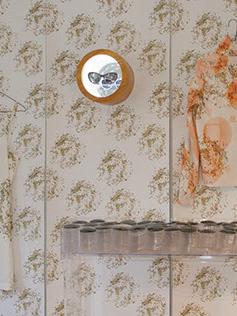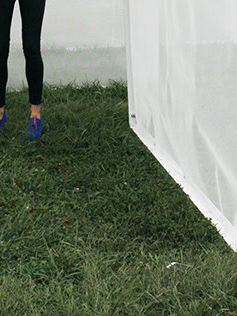2016
Coral City is an architectural installation inspired by the structure of the world's coral reefs: diverse systems full of curiosities experienced underwater. This project asks us to engage with the conceptual coral reef through perceptual and tactile experiences.
Coral City imagines the coral reef as a conceptual space full of psychological wonderment. Viewers to play as living coral, bringing the reef to life. A crystalline space alludes to the vulnerability of the reef, globally under attach by ocean acidification, rising sea temperatures, pollution, and human impact. A wave wall undulates in a sequence, perceptually flowing as the viewer moves across. Its white surface changes in color with refracted lighting. The white surface appears hard, while suggesting softness and mutability. This milled wall responds to chief architect of the contemporary art's center, Zaha Hadid, who explored curved forms as sensitive architectures.
The play of scientific discovery informs interactivity and material transformation. The beauty and fragility of the reef is expressed through the visual complexity and confusion of the wallpaper. Visitors get lost in the shallow and deep space of stripes, gradients and shapes. Colors of materials and surface change as the lighting changes.
The ocean is powerful and hard to understand. Being underwater is spatially confusing. This complexity hopes to draw people closer so they can experience the mystery of the oceans, and raise empathy and awareness for the future of the coral reef and our impact on world ecosystems.
-Digitally fabricated furniture covered in neoprene is movable and stackable, able to be re-configured.
-Yellow and grey striped wallpaper responds to the optical experience of being underwater.
-The wave wall is a 3D milled curtain unfolding in space. It appears to be moving, as a soft and fluid surface.
-Laser etched mirrors reflect opposing textures in the space creating portals to different viewpoints and perspectives.
-The lighting is inspired by early scientific experiments. The idea of refraction of light and surface is used with dichroic films. Light bounces off the film in one direction and creates different colors in the opposing direction.




